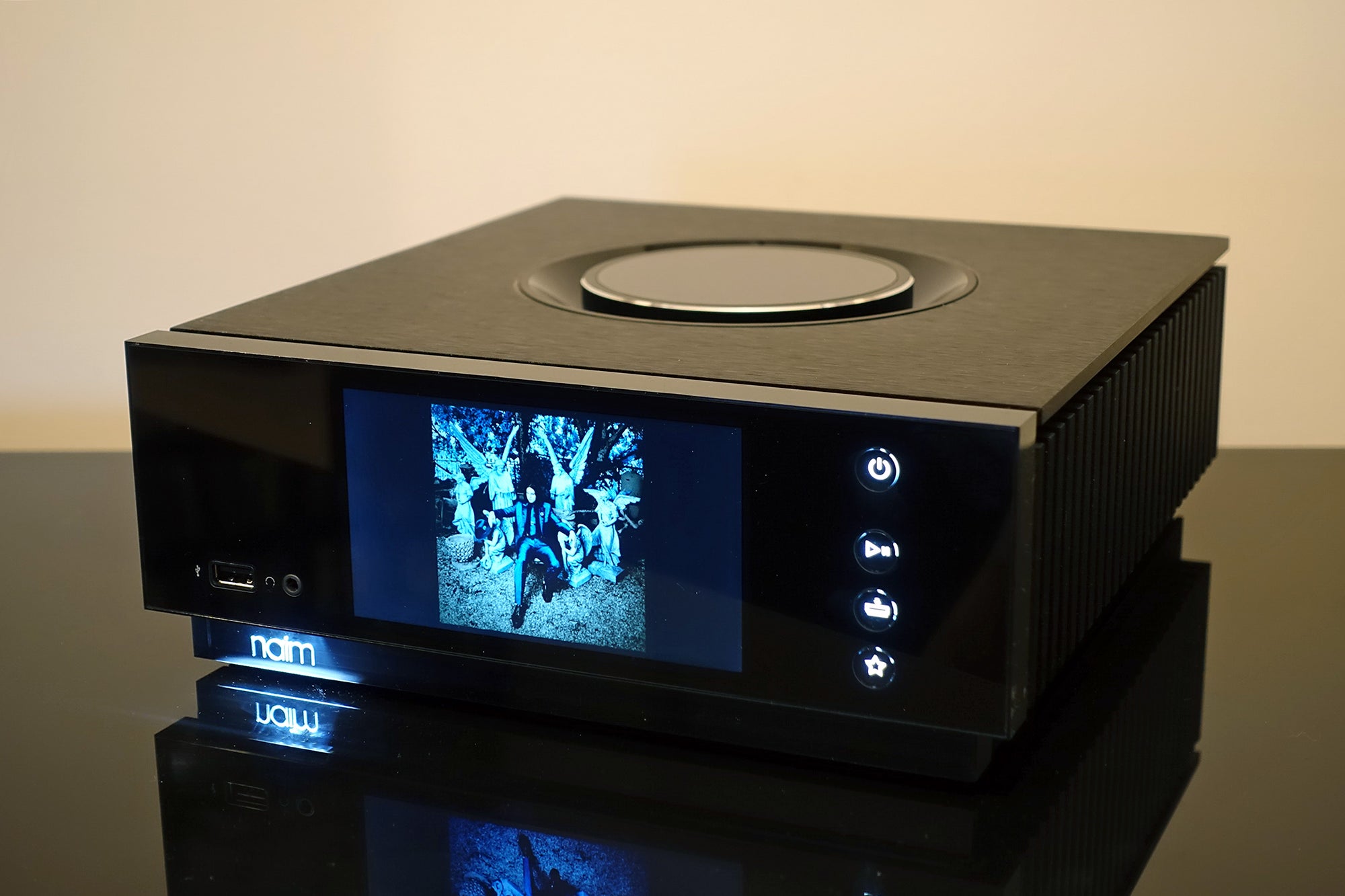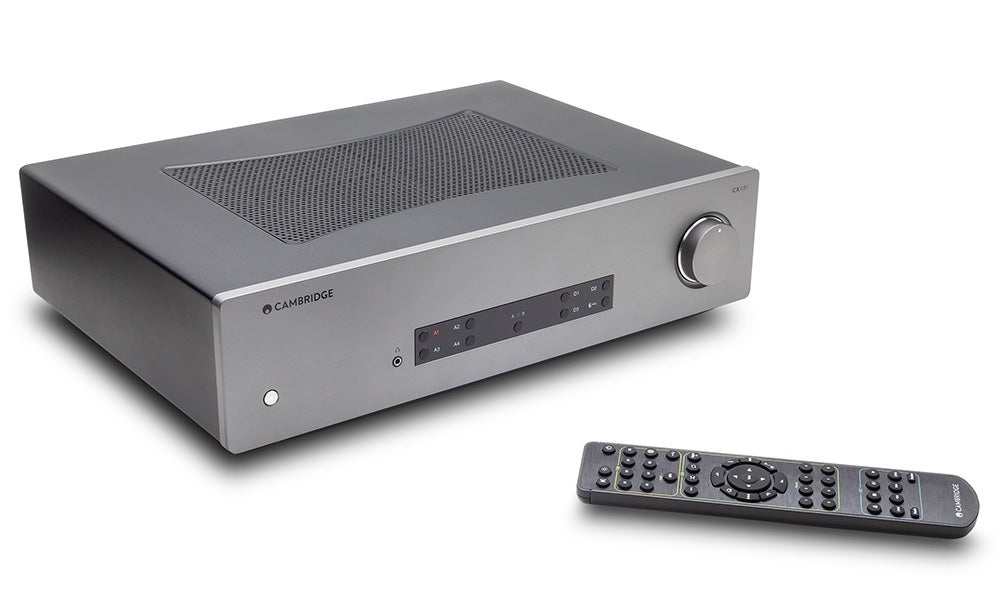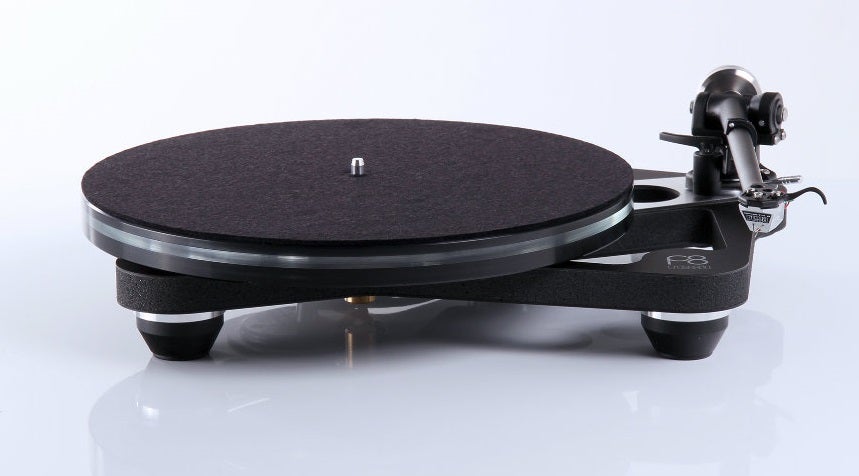Klipsch The Fives Review
Powered speakers that look to replace, well, everything
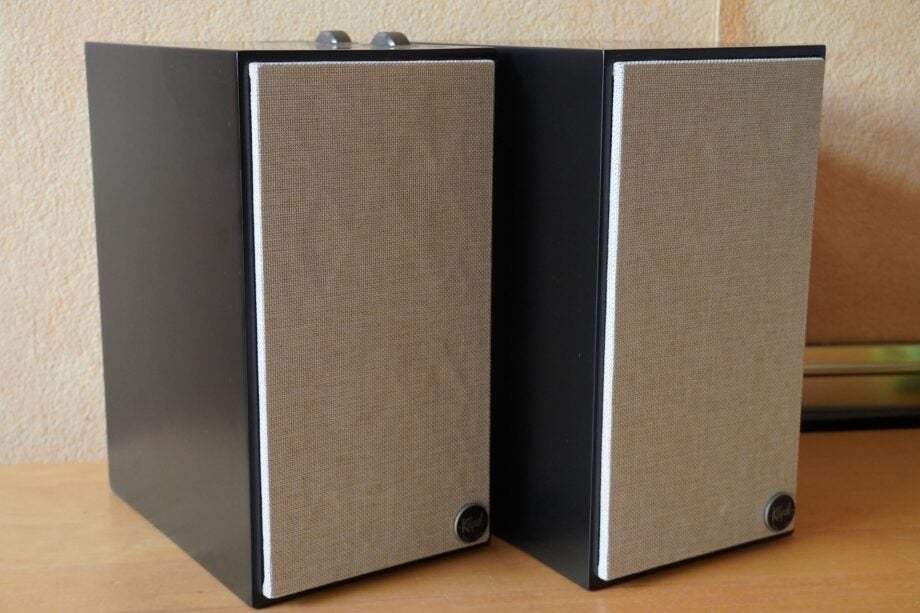

Verdict
Expensive and versatile in similar amounts, these Klipsch wireless speakers offer a rich and expressive-sounding experience – although they lack a degree of nuance and subtlety. Since they first launched, other similarly specced and cheaper options have also hit the market, and you may want to give those speakers a look if you find the Klipsch too dear on the wallet.
Pros
- Rich, inviting, powerful sound
- Hi-res audio support
- Nice aesthetics
- Versatile connectivity
Cons
- Pricey
- Not the most incisive performance
Availability
- UKRRP: £899
- USARRP: $799
- EuropeRRP: €899
Key Features
- aptX-HD BluetoothSupports ‘lossy’ version of high quality Bluetooth playback
- Dynamic Bass EQMaintains bass consistency to match volume levels
- 24-bit/192kHz hi-res supportCan decode hi-res files up to 24-bit/192kHz
Introduction
Klipsch The Fives are speakers that do a bit of everything. A jack of all audio trades rather than a master of any single one.
They’re a powered system with no need for external amplification, and their suite of connections ensures you can have them on their own, plugged into a turntable, or used as a soundbar replacement.
Has Klipsch got it right where it counts with its performance? Are these truly the most versatile speakers on the planet?
Design
- Slender profile
- Nice looks
- Scrollers for onboard controls
The Fives sport a slender, compact profile for a pair of powered speakers. Measuring at 304.8 x 165.1 x 234.95mm (HWD), they’re taller, slightly thinner and have less depth than the Q Acoustics M20 HD powered system. So, depending on the space you have, they may be more attuned to slotting in.
You’ll need to factor in the rear-firing bass Tractrix reflex port for positioning, as parking them close to a surface behind, or in a free-standing position, can affect the levels of bass produced.
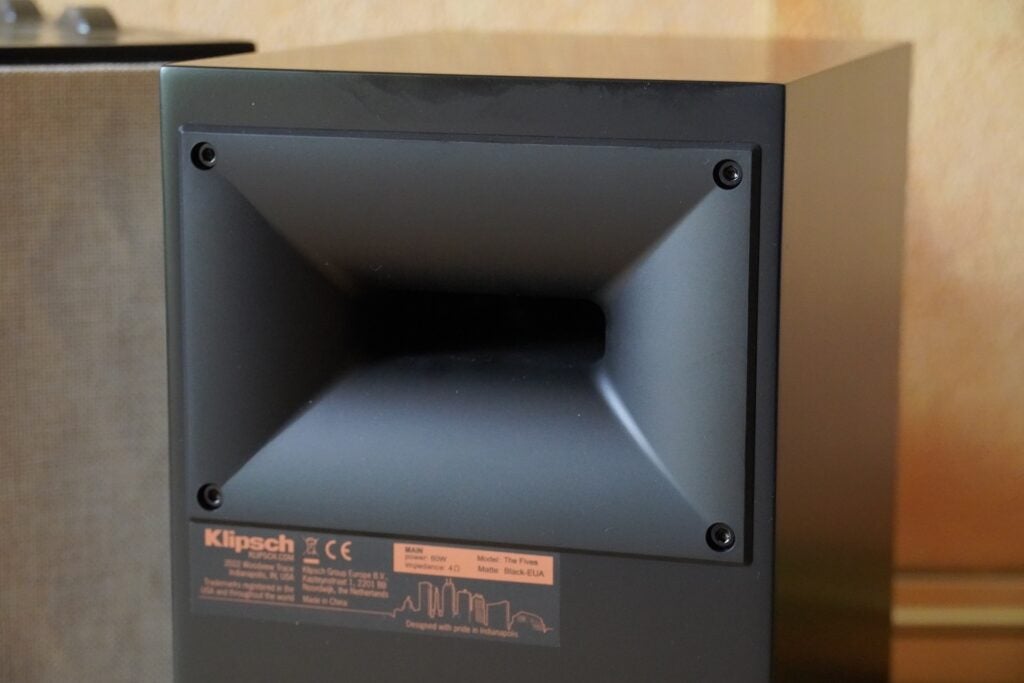
Build quality is good, and they’re available in the matte black of this review sample or walnut finish. The MDF enclosure with wood veneer is smooth in appearance and, giving the surface a rap with my knuckles, it certainly feels solid. The review sample arrived with a choice of two grilles to cover the speaker’s front, magnetically attaching and locking in.
The beige look is my preferred option, especially since the speakers have been in rooms with lighter colour schemes. Lift the grille and you will find Klipsch’s patented 90 x 90 Tractrix horn speaker (with 1-inch titanium dome tweeter behind it) and a 4.5-inch-long throw woofer. There’s also the more expensive McLaren edition of The Fives that has the logo and finish in the papaya and black colour scheme of the F1 team.
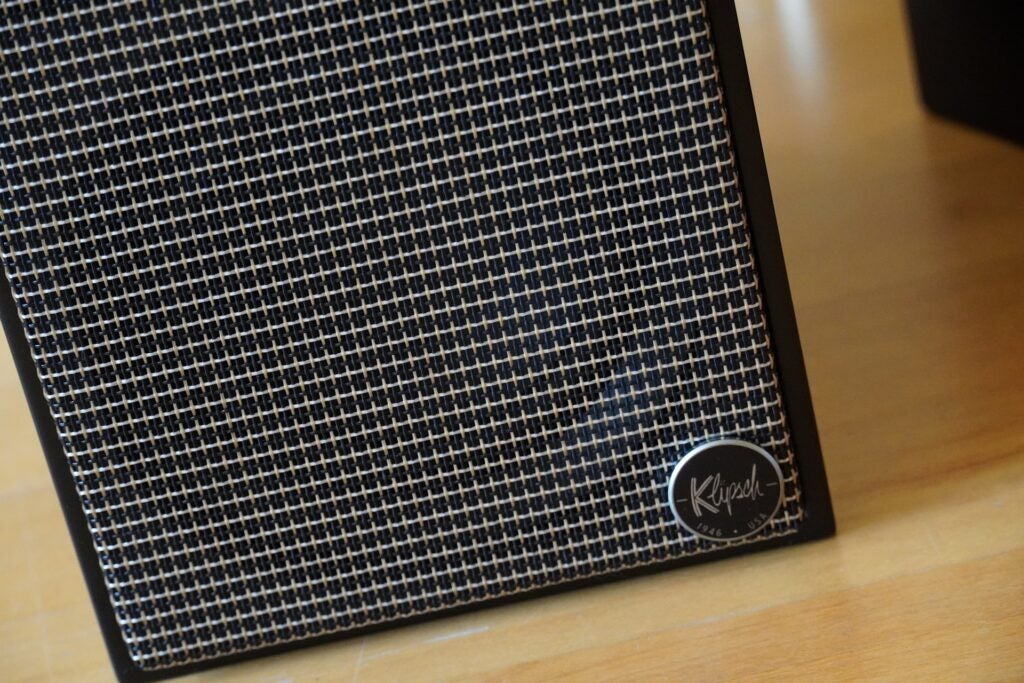
They weigh a not inconsequential 5.25kg and 4.85kg for the powered and passive unit respectively, but aren’t too heavy to lift and park on a table or pair of stands. Since this is a powered system, it does away with any external amplification, reducing the number of boxes required with the heavier box featuring the built-in amplifier. Some will be rankled by a “wireless speaker” needing a 4m connecting cable as a tether between the two boxes, but I didn’t find it a massive inconvenience.
In addition to the powered speaker is a dial for controlling the volume and sources. I really like this approach of scrolling through the volume and sources; it’s a nice, tactile way of interacting with the speakers. The other way is via the remote, which is functional and covers almost everything in terms of control and sources (there’s no track skipping when listening to music). If you connect a subwoofer – and any kind of subwoofer is supported, not just Klipsch – then there are buttons for resetting it and adjusting the levels.
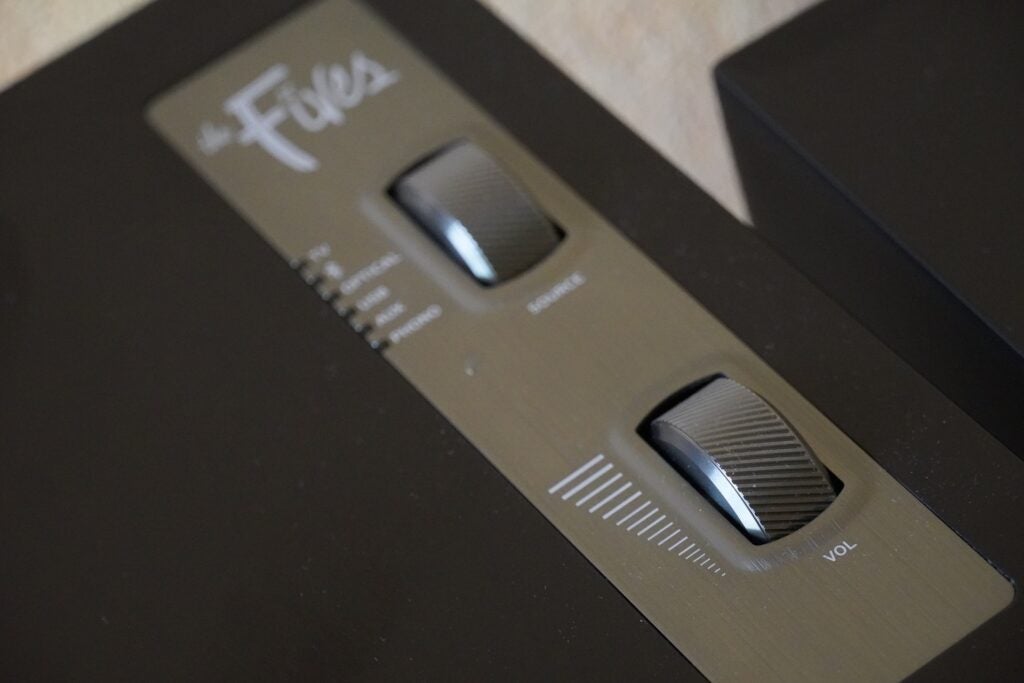
Features
- Lots of connectivity options
- Wireless and wired hi-res playback
- Klipsch Connect app
The Fives push out 160W of power, with 60W allocated to each low-frequency driver and 20W to each high-frequency unit. The system can hit a peak of 320W when pushed, suggesting it’s capable of going proper loud when given the means to do so. Compared to the M20 HD’s power handling it’s a significant step-up, at least on the spec sheet.
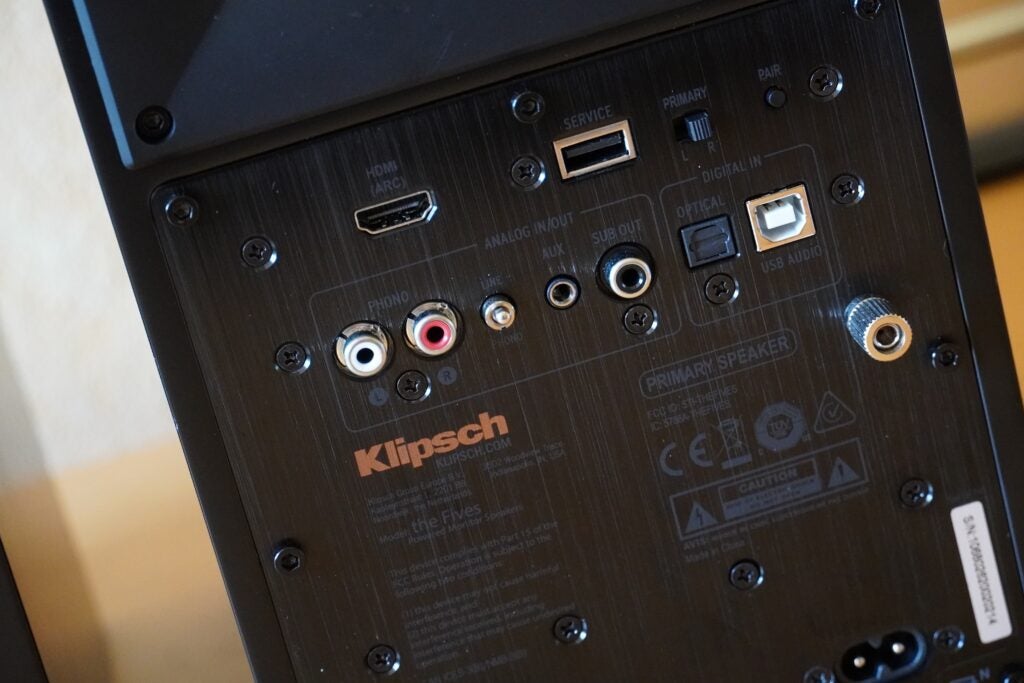
Around the back of the powered unit are the connections, and there’s plenty of ground The Fives cover. There’s HDMI ARC for connection to a TV, the ARC port also allows for the TV’s remote to control The Fives’ volume. There are phono inputs, a line switch, 3.5mm input for analogue sources, sub out, USB input and optical out.
That covers everything from turntables, laptops, Blu-ray players, PC/Macs, powered subwoofers and game consoles. Plug in a source and the Klipsch can likely wring a tune from them, and the speakers fittingly come with lots of cables to save you the effort of finding one, including a HDMI and USB-A to B cable.
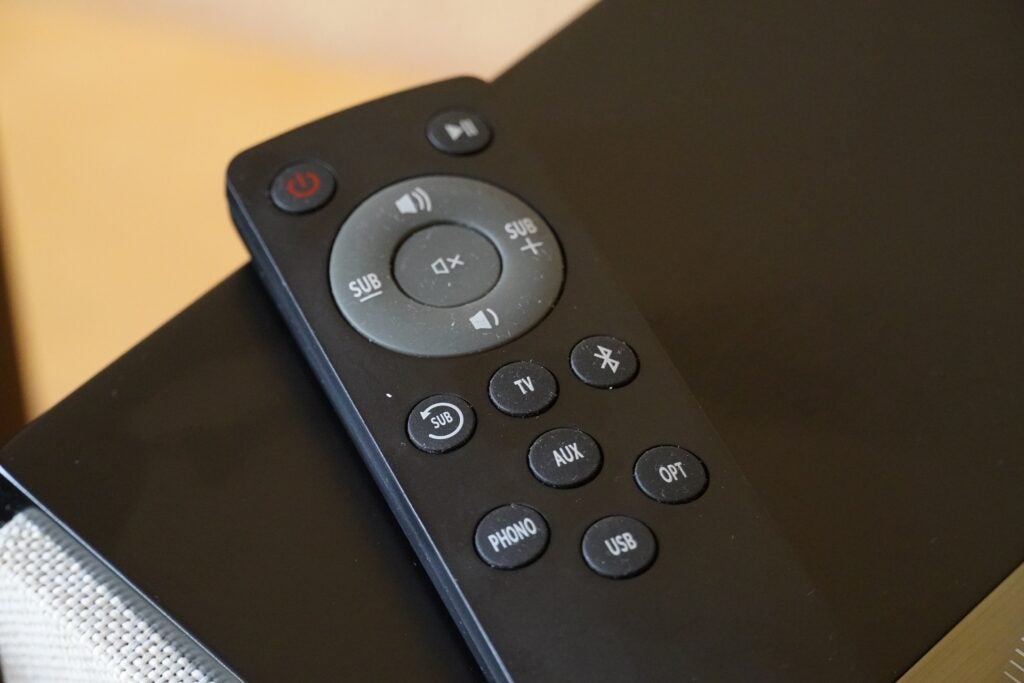
There’s also a service port for updating, a Bluetooth pairing button – you can achieve this using the source selector and remote, too – and a switch for determining whether the primary speaker is on the left-hand side or the right. This offers flexibility no matter how you set things up and is helpful for placing the speakers closer to where the connections are on a TV, for example.
Bluetooth audio streaming is supported up to aptX-HD, which supports audio resolutions up to 24-bit. AptX-HD is a fatter pipe to allow for more detail to be carried to the speakers over a Bluetooth signal from a compatible source. Playing 24-bit/192kHz resolution files is also possible via USB connection to a PC. Connection to a TV can throw up some weird gremlins: the Fives either disconnect from a Sony OLED with regularity, or display a slavish devotion to being reunited with my smartphone.
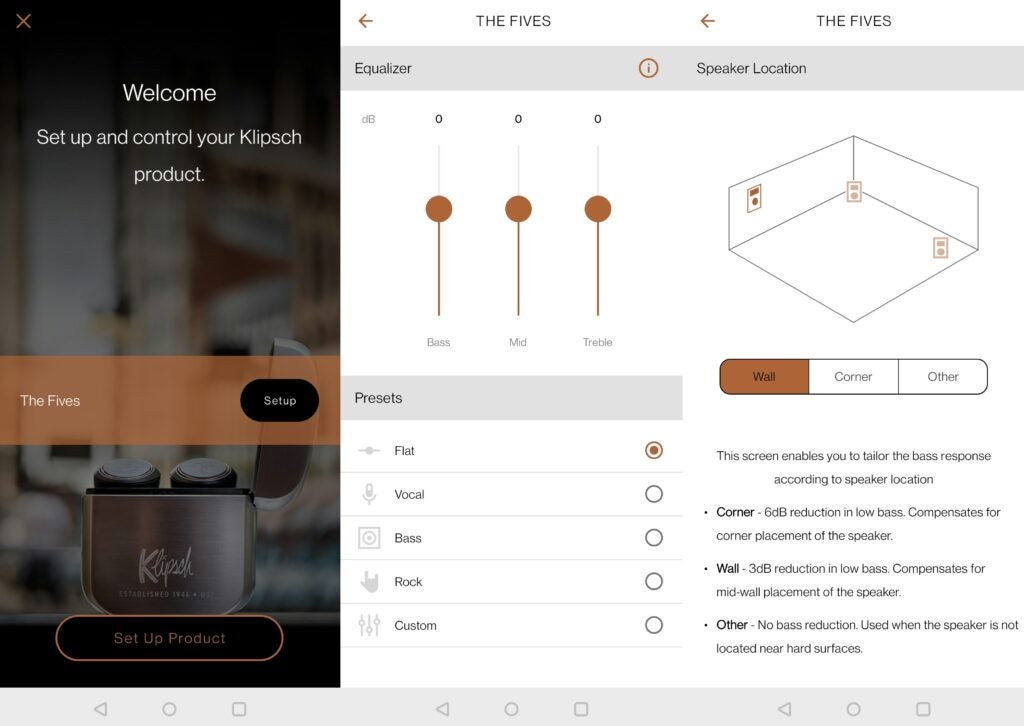
The Fives are also compatible with the Klipsch Connect app. The interface is cleanly laid out and ease of use is tremendously simple, although the app is susceptible to not connecting every once in a while. In-app features include EQ settings/presets, setting speaker placement (wall, corner, other), subwoofer adjustments and Dynamic Bass EQ.
The last feature is the app’s most noteworthy. It allows The Fives to dynamically match the performance of its bass to the current volume. It’s essentially loudness correction to ensure the low-end performance is always consistently delivered whether the volume is high, low or anywhere in between.
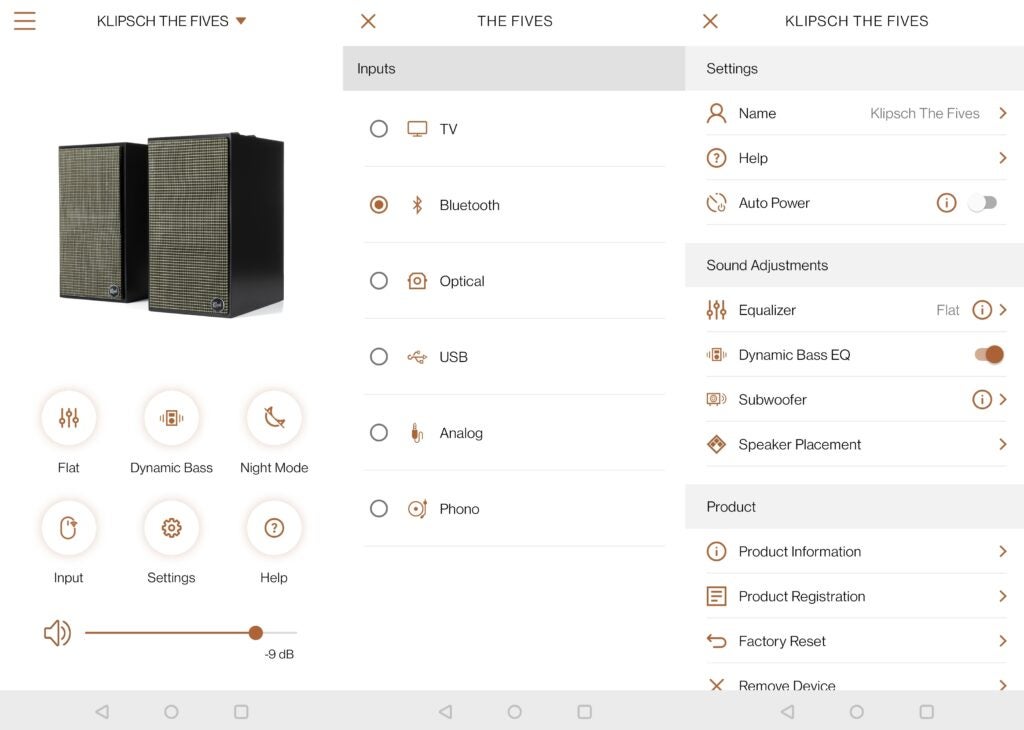
Sound Quality
- Dynamic Bass EQ adjusts bass performance
- Not the last word in terms of nuance
- Capable of a big, expansive, rich sound
The Dynamic Bass EQ works to ensure a consistent foundation for The Fives performance. Listening to Marvel’s Hawkeye soundtrack, the bass sounded unrefined at higher volumes, as if it there was too much power being sent to the woofer. With the Dynamic Bass EQ on, the low-end was better controlled, and I heard the same effect with Tyler, The Creator’s Corso – slightly hard and flat without the EQ, and offering more depth and presence with it. Turn it on and the EQ produces a more malleable bass performance.
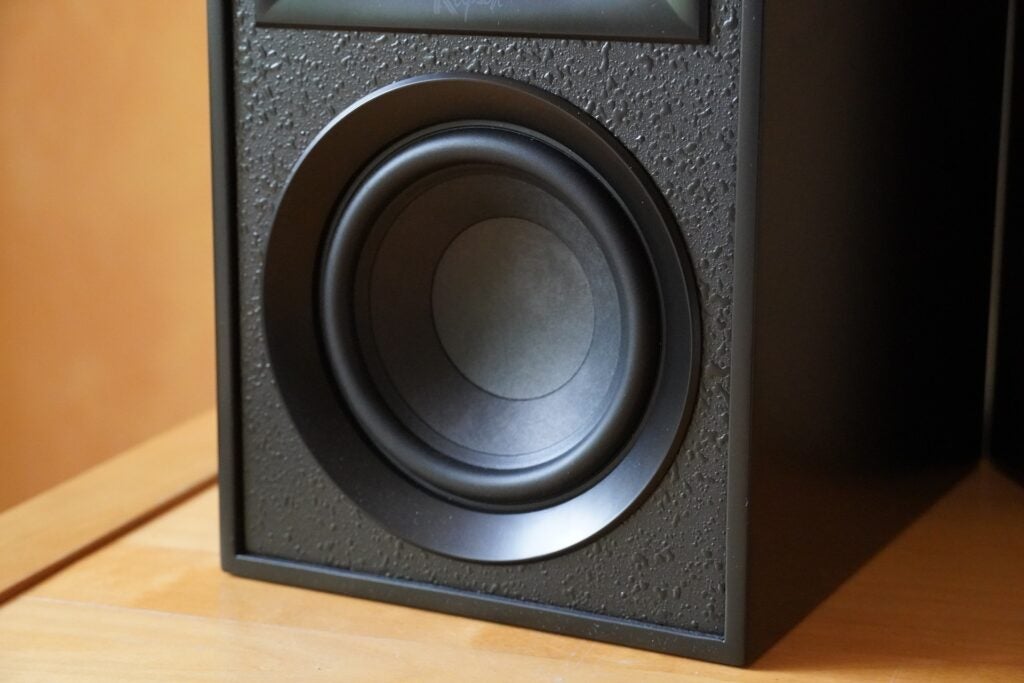
The Fives’ bass performance also speaks to the level of power it can summon since the speakers are able to give low frequencies some welly. The bass in Turnstile from Ludwig Göransson’s soundtrack for Tenet is weightily reproduced with warmth and richness, although while the timing of the beats and synthesized instruments holds up fairly well, there’s a lack of snappiness and definition in the way the Klipsch digs into the track.
Clarity of voices are relayed with warmth and smoothness in Kendrick Lamar’s Alright and Jessie Buckley’s Country Girl from Wild Rose, the emotion of her voice is solidly conveyed. Detail levels are also strong, picking out some nice definition of the guitar in Woodkid’s Brooklyn. Overall, though, I think this powered system is lacking a degree of subtlety and finesse.
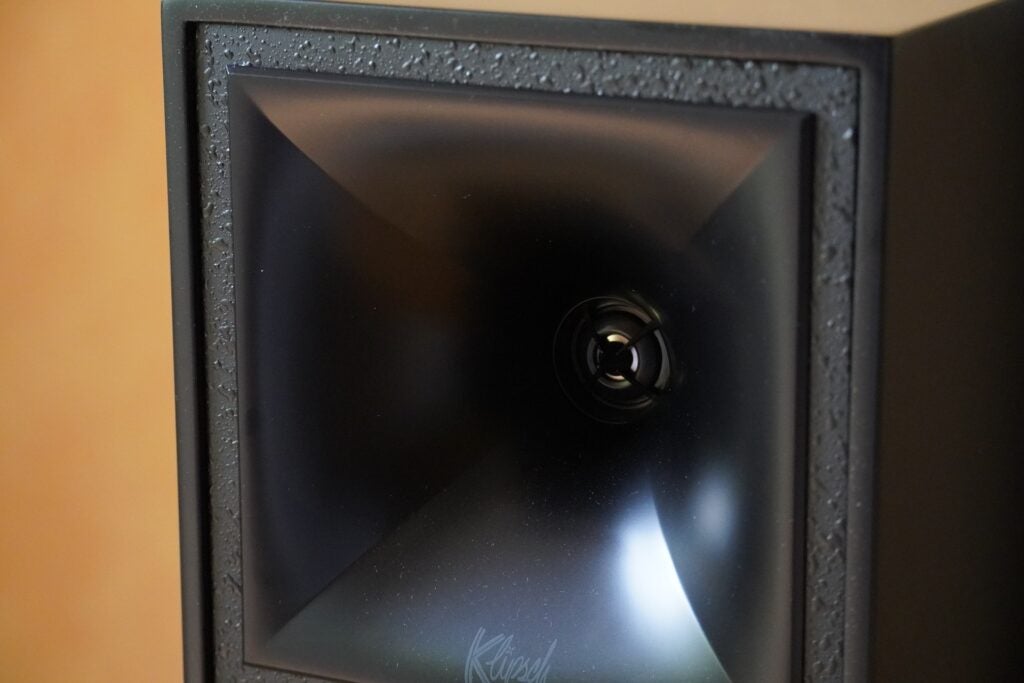
The Fives have a character that’s energetic, but the rich tonality can affect the clarity of the mid-range (Woodkid’s voice is a bit heavier than I expected). The soundstage the system puts up trades a degree of incisiveness for energy. While The Fives are never less than entertaining, for the price I’d argue they should offer more.
Give them slower-paced tracks from Tame Impala’s The Slow Rush album or Austin Wintory’s mesmeric Abzu soundtrack and I think they lend themselves better to more measured pieces. When music in Abzu rises, the Klipsch speakers are right there with it, their sense of expansiveness and dynamism creating a big, flowing stereo sound.
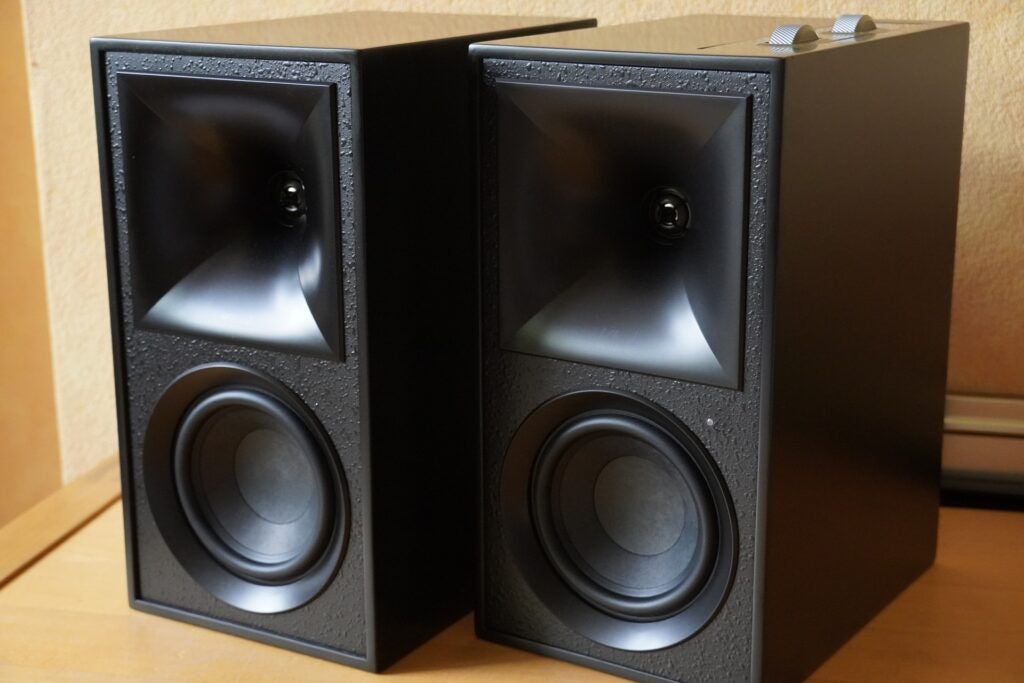
And the top-end of the frequency is handled solidly, described with a good amount of brightness and expression, although on the default EQ I’d say the speakers could hit sharper notes. Adjusting the EQ brings out more clarity, detail and texture, and wrings out an even more expressive and natural performance from Miles Davis’ So What from his Kind of Blue album. When on song, the Klipsch speakers sound tremendously expressive.
Used with a TV, they’re a convincing enough substitute for a soundbar. Voices and effects match their on-screen placement, with the power, weight and scale impressing when watching the opening of Reminiscence as the waves crash into a flooded Miami of the future.
Tonally, the system’s richness helps to deliver a smooth performance, although my preference is extra crispness to bring out more detail. Nevertheless, they’re clear enough to reveal small details in films and TV series. Just remember to set the TV’s audio output to PCM; otherwise, the speakers won’t output any sound.
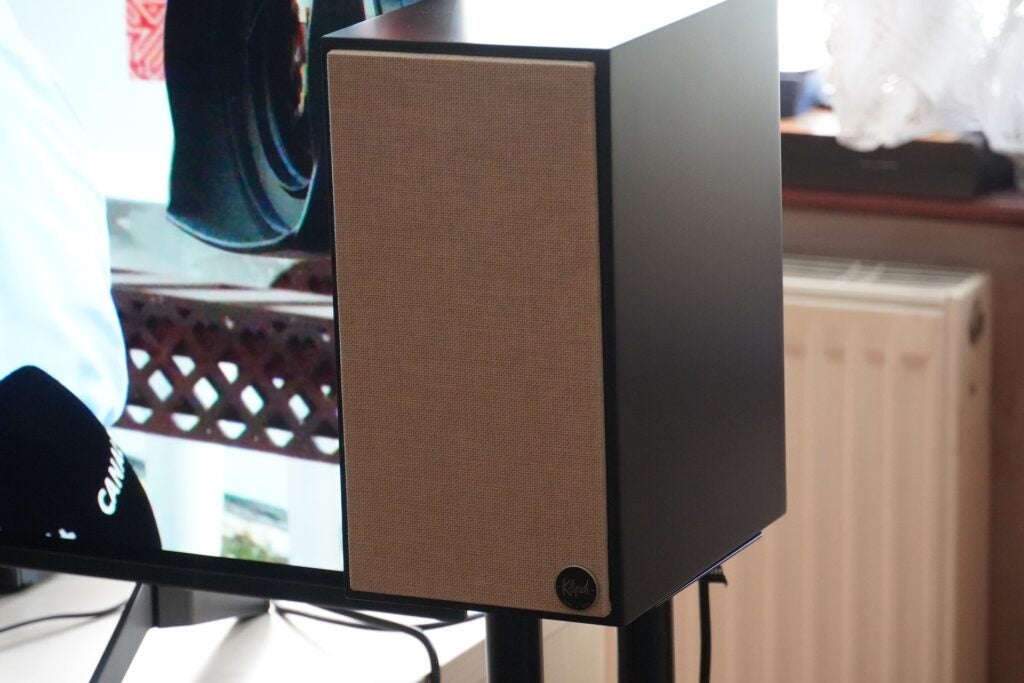
Latest deals
Should you buy it?
If you have lots of sources to plug in From turntables to TVs and PCs, The Fives are happy to accept a signal from a wide range of sources and the resulting sound quality is a consistently enjoyable one.
If you want to spend less The Klipsch haven’t come down much in price, which makes them a pricey proposition compared to the new kids on the block that boast a similar feature set. Paying nearly double is a big jump.
Final Thoughts
I very much enjoyed the time I spent with The Fives. They have energy, they have scale and reach in terms of dynamism, and the bass performance is effective. They’re best enjoyed when turned up and turned up loud, delivering a consistent and characterful sound.
However, I don’t find them to be the most incisive or detailed, and despite their wide-ranging dexterity on the feature count, they’re expensive compared to speakers from Q Acoustics and Edifier that offer a similar spec sheet.
So they’re not the best value proposition – three years on from their launch, they still maintain a high price – but they can be a very impressive listen and they’re versatility is a big win. Fiddle around with their settings and there’s many hours of enjoyment to be had and heard from this powered wireless system.
How we test
We test every wireless speaker we review thoroughly over an extended period of time. We use industry standard tests to compare features properly. We’ll always tell you what we find. We never, ever, accept money to review a product.
Find out more about how we test in our ethics policy.
Tested over two months
Tested with a range of music
FAQs
Both versions of the Klipsch The Fives have the same features and any differences are purely cosmetic.
Yes, you can connect any sub with an RCA line level input to the Fives.
Macs can play 24-bit files through to The Fives. You will need the right source (such as Qobuz) and a DAC to play/output 24-bit on Mac. A wired connection to the Fives with their built in DAC will also work.

